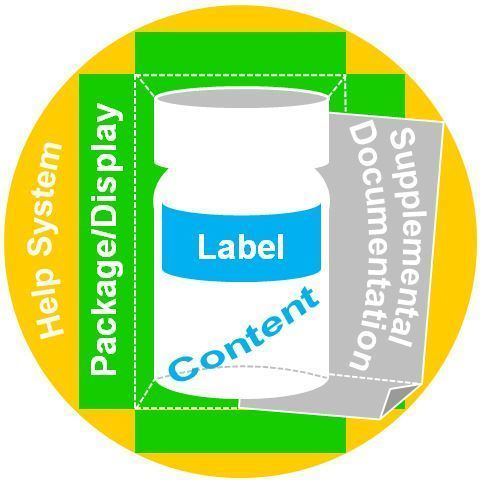 | ||
Over-the-counter data (OTCD) is a design approach used in data systems, particularly educational technology data systems, in order to increase the accuracy of users' data analyses by better reporting data. The approach involves adhering to standards that are organized by five components: Label, Supplemental Documentation, Help System, Package/Display, and Content.
Contents
- Background
- Significance
- Over the Counter Data Study
- Over the Counter Data OTCD Standards
- Mentions of OTCD
- References
OTCD was inspired by the varied ways over-the-counter medication supports those using its contents. Just as it would be negligent for over-the-counter medication to contain no labeling, documentation, or other supports helping people to use its contents safely, it is deemed negligent for data systems to display data for educators without providing them with the necessary supports to best ensure it is used correctly when educators use the data to treat students’ needs.
Background
Inspired by the varied ways over-the-counter medication supports those using its contents, OTCD was created in 2010 and applied to the improvement of education data systems. Consider the way in which the Food and Drug Administration (FDA) requires over-the-counter medication to be accompanied by textual guidance proven to improve its use, deeming it negligent to do otherwise. With such guidance, patients may take over-the-counter medication with the goal of improving wellbeing while a doctor is not present to explain how to use the medication. No or poor medication labels have resulted in many errors and tragedy, as people are left with no way to know how to use the contents wisely.
Labeling conventions can translate to improved understanding on non-medication products, as well. Thus, in the way over-the-counter medicine’s proper use is communicated with a thorough label and added documentation, a data system used to analyze student performance can include components to help users better comprehend the data it contains. Using an OTCD approach (i.e., following OTCD Standards) when communicating data involves following research-based recommendations likely to improve educators’ understanding, analysis, and use of the data being displayed.
Nonetheless, labeling and tools within data systems to assist analyses are uncommon, even though most educators analyze data alone. Essentially, data systems and reports do not commonly present data in an “over-the-counter” format for educators, whose primary option for using data to treat students is thus compared to ingesting medicine from an unmarked or marginally marked container. Just as it would be negligent for over-the-counter medicine to contain no labeling, documentation, or other supports helping people to use its contents safely, it is negligent for data systems and reports to display data for educators without providing necessary supports to best ensure the data is used appropriately and thus has a desirable impact on students.
The recommendations summarized by OTCD Standards (below) are based on research in education and edtech, as well as research in a variety of other fields (e.g., behavioral economics, design, business analytics, technology, and more). An OTCD approach is not meant to replace educators’ professional development or other interventions that improve data use, but it is an added solution that doesn’t cost educators more time, money, or stress.
Significance
Educators have widely accepted the importance of using data to inform their treatment of students’ needs. This is a good thing, as research touts the benefits of effective data use. Unfortunately, educators’ widespread data use is not always a good thing. A significant portion – and some research claims most – of educators analyzing and using data are doing so incorrectly. For example in two U.S. Department of Education studies conducted in districts known for strong data use, teachers achieved only 48% accuracy when making data inferences involving basic statistical concepts. Thus educators are using data to inform decisions, but they do not always understand the data they are using. Since their data-misinformed decisions impact the students such decisions are meant to impact, this is a significant problem. Edtech products that present data to educators in an over-the-counter format – as opposed to simply “showing the data” and requiring educators to dig up resources to aid analyses – play an active role in improving educators’ data use.
Over-the-Counter Data Study
Though numerous studies over the years have produced evidence on which the OTCD standards are based, one quantitative study in 2013 focused specifically on OTCD’s direct impact on data analysis accuracy (as opposed to merely determining which edtech aspects educators prefer). 211 educators of varied backgrounds at nine schools in six different California school districts participated in the Over-the-Counter Data’s Impact on Educators’ Data Analysis Accuracy study. The study’s premise was to determine the precise impact on analysis accuracy when data system reporting environments made data “over-the-counter,” giving educators embedded supports like the kind over-the-counter medication provides for users in the form of labeling and supplemental documentation. Key findings were significant and hold implications for educators, educational technology and/or data system vendors, and anyone else involved in communicating data to educators:
Relating to primary research questions
Relating to Secondary Research Questions
Over-the-Counter Data (OTCD) Standards
OTCD Standards involve embedding data analysis supports directly within reporting environments and adhering to best practices concerning design. OTCD Standards were designed to be used by anyone communicating data to educators and to be reflected in the tool(s) through which the data is communicated (e.g., data report, data system, or other edtech product with a data component). Their purpose is to foster optimal educator (“user”) understanding, analysis, and use of the data being provided.
Mentions of OTCD
Organizations’ and publications’ mentions of OTCD include:
